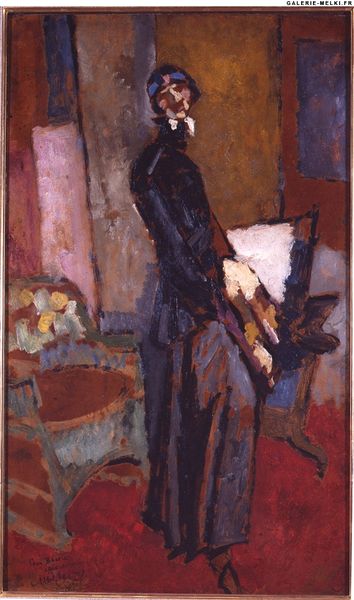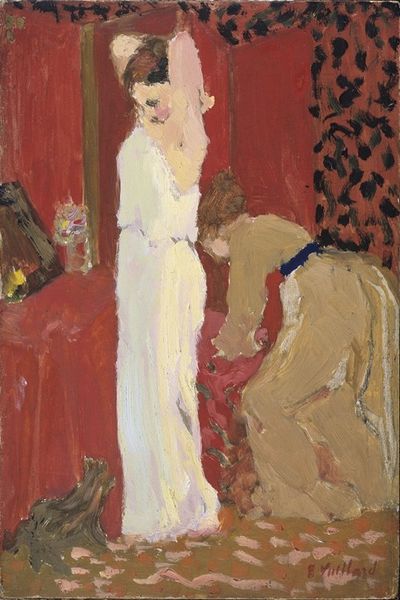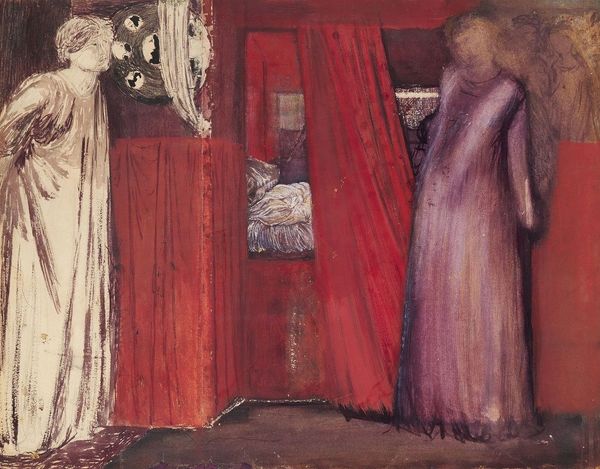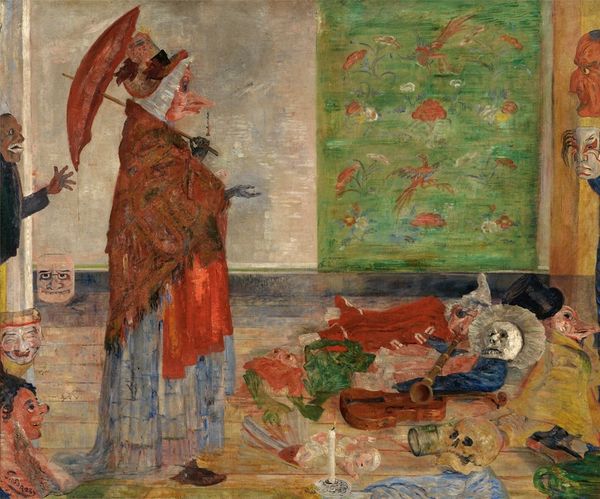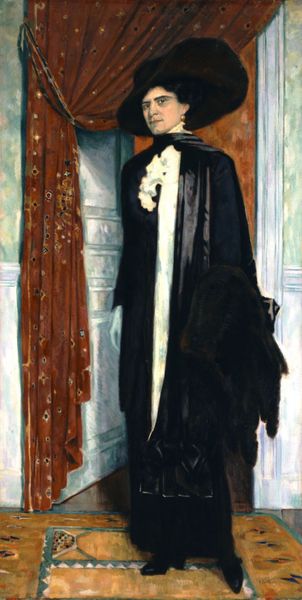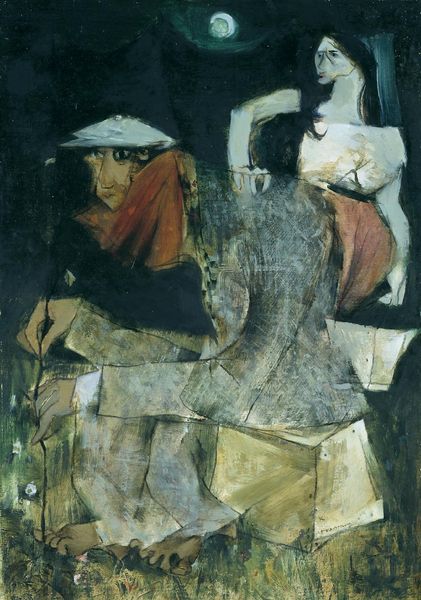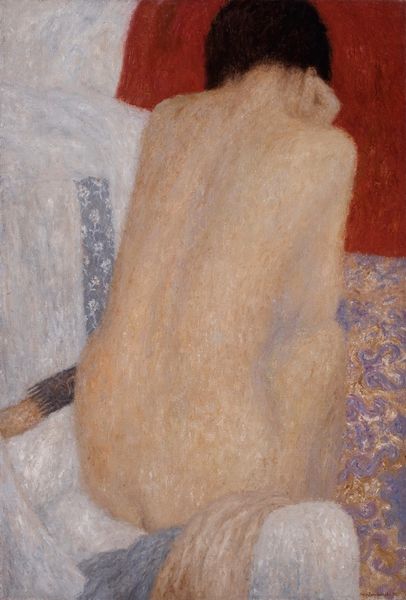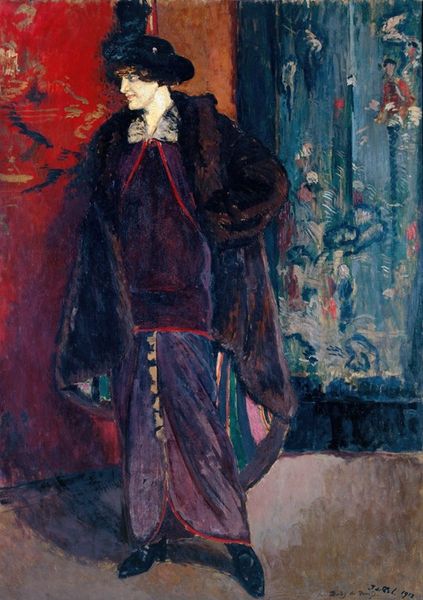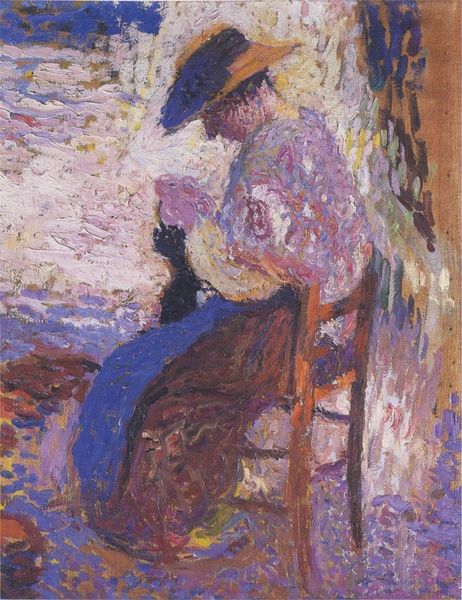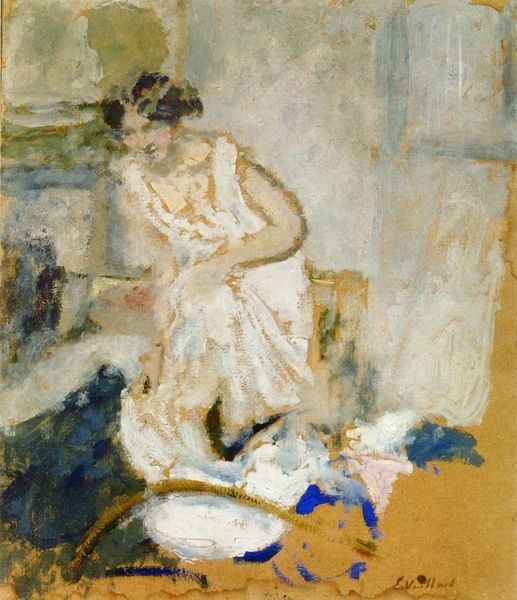
Copyright: Public Domain: Artvee
Curator: Édouard Vuillard’s "A Seamstress," painted in 1892, offers us a glimpse into the private world of labor. It’s painted with oil on board in Vuillard's distinctive impressionist style. Editor: My immediate impression is the overwhelming sense of enclosure. The woman, her work, and the wallpaper seem to merge into a claustrophobic, yet oddly comforting, interior. Curator: Precisely! This resonates with Vuillard's larger oeuvre that investigated late 19th century bourgeoisie Parisian life. It presents an intimate, almost voyeuristic, look at the everyday lives of women in domestic spaces. Note how the gaze avoids idealization, presenting instead a frank image of a working woman. We can also read the dress in the painting, the seamstress' tools as markers of female labor. Editor: Absolutely. I’m particularly drawn to the textures and materiality. The visible brushstrokes and the way he builds up the oil paint suggest a very physical process of creation, one echoing the labor depicted. Think about the social and material conditions necessary for producing that dress, and this painting for that matter. The seamstress's repetitive hand motions, mirrored by Vuillard's repeated brushstrokes. Both labor and artistic processes intersect, both use different material elements. Curator: And how does her position as a working woman reflect the gendered labor divisions of the period? Vuillard depicts this domestic setting without sentimentality. She isn’t heroicized or sexualized, but shown engaged in the repetitive and painstaking work society often deems "women's work". Considering this scene also means facing its possible historical implications. Editor: The act of making—sewing, painting— becomes a way to understand value. Who benefits from the creation? Whose work is celebrated and why? The contrast between the artistry of Vuillard's hand and the overlooked, functional artistry of the seamstress's is quite evident here. Both create beauty through their own means. Curator: Vuillard is offering commentary on class and gender dynamics within a rapidly modernizing Paris, making “A Seamstress” a statement. Editor: It's fascinating how an intimate interior scene like this can unveil such broad societal considerations, by carefully looking at what materials form that society. Curator: Indeed, through an intersectional reading, the artwork speaks to both private and collective histories of class, gender and labor. Editor: A study in intimate social labor through intimate physical creation.
Comments
No comments
Be the first to comment and join the conversation on the ultimate creative platform.


